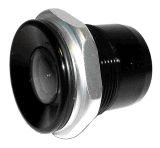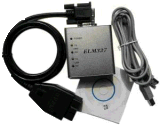OBD2 FAQ - Frequently Asked Questions About OBD2
- What is OBD, and why is it important?
- What is an MIL?
- Why does the light come on when I start the engine?
- What should I do if the light comes on while I'm driving?
- What if the light is flashing?
- What if I ignore the light?
- Do I need to visit a repair shop to fix the problem?
- What happens if the light goes out by itself?
What is OBD2, and why is it important?
OBD is an acronym for On Board Diagnostics. The 2 at the end stands for version 2. In the late 1970's and early 1980's, manufacturers made increasing use of electronic systems in cars, particularly for engine control systems and fault diagnosis. This was partly due to the increasingly widespread use of electronics in all consumer goods, but also due to the ever tightening emission regulations. Diagnostic systems have gone through significant changes since their introduction, and in the 1990's OBD-II was rolled out, giving diagnostic information on not only the engine, fuel and emission systems, but also some body, chassis, and transmission functions.
The system warns of malfunctions by turning on a "Check Engine" light on the dashboard and can identify problems at an early stage before they turn into major repair bills.
What is an MIL?
MIL is another acronym and stands for Malfunction Indicator Lamp. This is sometimes called a "Check Engine Light". This light on the dashboard is the visual indicator to show the OBD system has detected a fault.
Why does the light come on when I start the engine?
This is normal. When you turn on the ignition and start the car, the MIL illuminates for a short time. This is to signify that the system is working properly. The light should then go out and stay out during your journey.
What should I do if the light comes on while I'm driving?
If this happens and the light stays on, a fault has been detected. This could be for any number of reasons. Don't panic. Check your instruments. Is the water temperature OK? Oil pressure? If the readings on all your instruments are fine and you haven't seen or heard anything amiss, you should be safe to drive on. It is worth stopping at the earliest opportunity to check your fuel filler cap is securely closed. This can cause the MIL to come on.
If the light stays on, you do have a problem and it needs to be addressed as soon as practicable. Better still - if you have a carputer, then buy an . If this happens to you, you can find out more about the source of the problem immediately the light comes on.
What if the light is flashing?
A flashing light indicates a more serious problem such as misfiring. This has the potential to damage the catalytic converter, therefore should be checked out at the earliest possible moment. The car is still safe to drive, but you should keep the driving time to a minimum, avoid driving at high speed, and should not put any undue stress on the engine, such as towing a heavy load.
What if I ignore the light?
You should never ignore the light. At best, this will result in inefficient and costly running. At worst it can lead to component damage and your vehicle breaking down.
Do I need to visit a repair shop to fix the problem?
Not a straightforward question. Ultimately, this depends upon your level of technical expertise. If you have an OBD2 scanner, it will indicate the area where the fault lies, however there will normally be some additional checks to be carried out to pinpoint the precise cause of the fault. If you are technically competent to make the repair, OBD2 has made your diagnosis easier. If not, you can talk more knowledgably to the people at the repair shop, and are less likely to have the wool pulled over your eyes.
What happens if the light goes out by itself?
If the cause of the light coming on disappears, the OBD system will turn the light off. This is just the system doing its job. It may be that the problem was temporary, or a corrective action has been taken. You need take no further action unless the light comes on again.
« Return to main OBD2 page from OBD2 FAQ
my-car-computer.com








